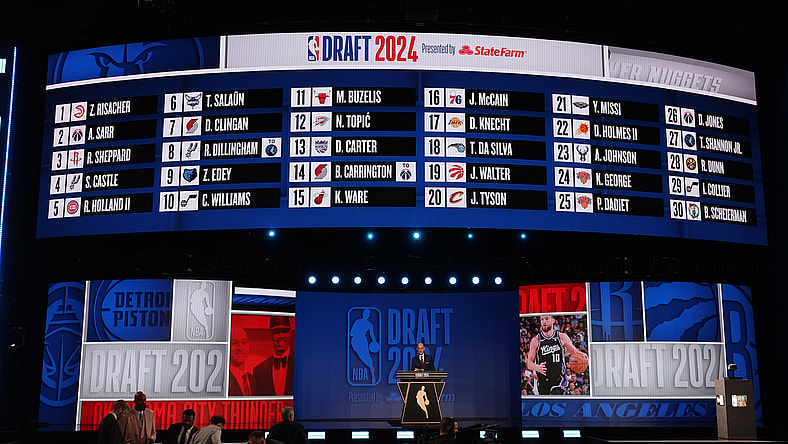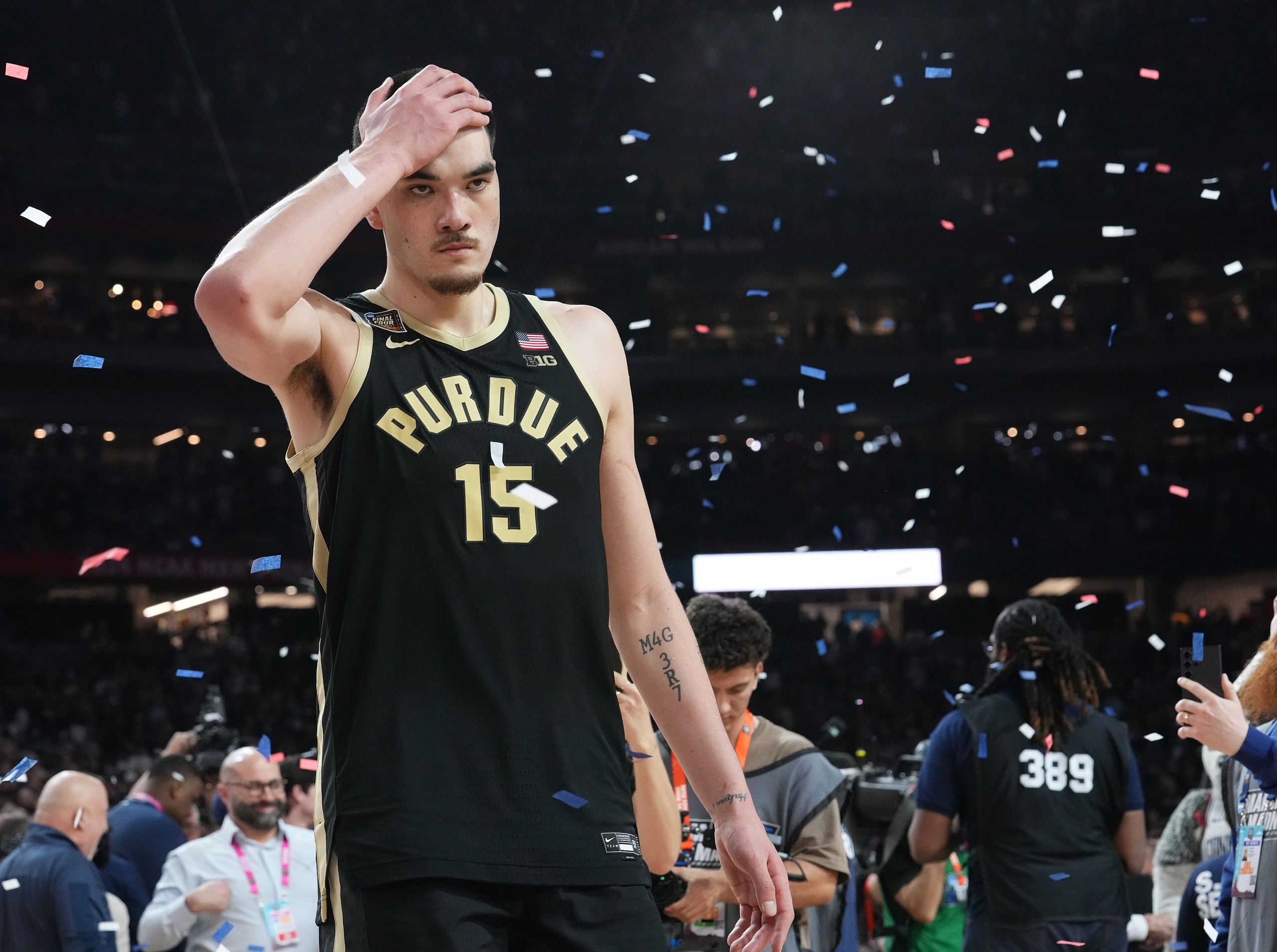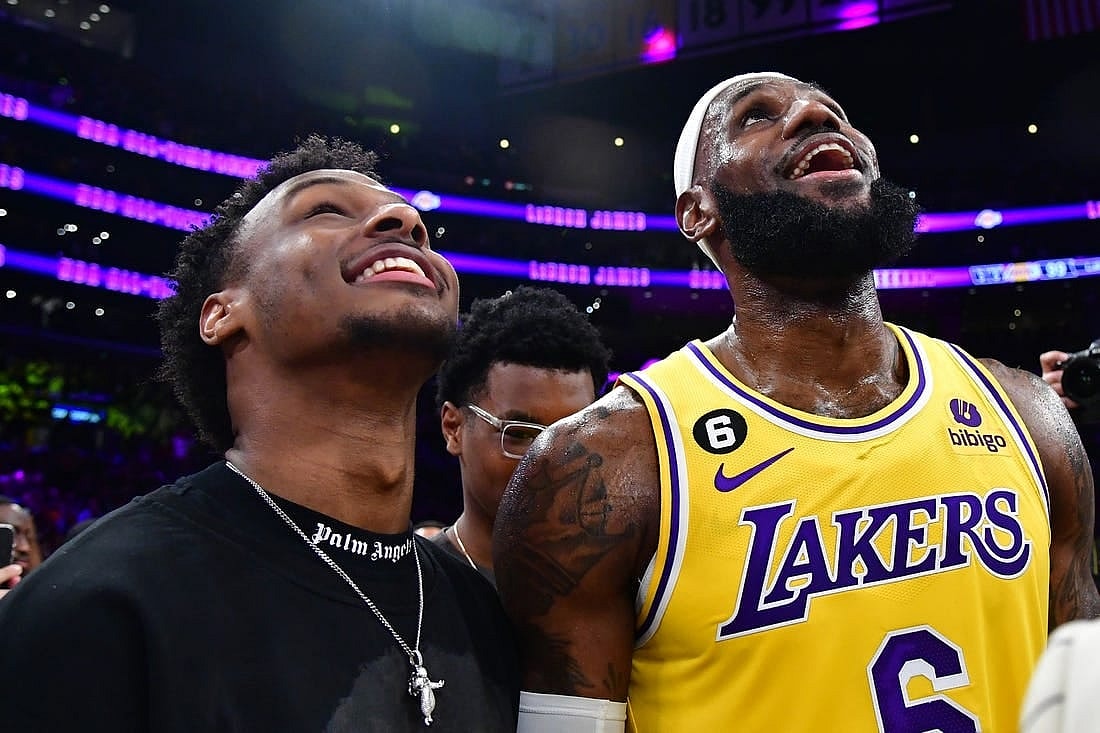
The 2024 NBA Draft made history as the first time the event was stretched from one to two days, separating the first and second rounds. This decision gave teams more time to make decisions, doubling their time limit from two minutes to four in the second round. But let’s be honest, most of the action took place on the first night, yet teams still made plenty of moves on Day 2. Who were the biggest winners and losers from the 2024 NBA Draft?
Winner: Washington Wizards

Despite picking second, many would argue the Washington Wizards got the best prospect in the 2024 NBA Draft class, with Alex Sarr. The Wizards need help at every position, but drafting the 19-year-old 7-footer gives Washington a potential two-way star in time. They also added several future picks by sending Devi Avdija to Portland, knowing he wasn’t a key part of their core. Later on, the Wizards added another raw prospect in Kyshawn George, who should be able to score some points while developing his other traits in Washington.
Related: 10 best second-round picks in NBA Draft history: Nikola Jokic to Khris Middleton
Loser: Deandre Ayton

What was the point in getting Deandre Ayton as one of the centerpieces of the Damian Lillard trade? Less than one year later, the Blazers already drafted his replacement with the arrival of Donovan Clingan with the seventh pick. We love the Clingan pick; he has a chance to be even better than Ayton, but it’s hard not to see the writing on the wall for the former No. 1 overall pick. He’s averaged a double-double in all six seasons, but he’s also owed $69.5 million over the next two years. Now that teams know he’s not a part of Portland’s future, how much trade value does Ayton have now?
Related: NBA trade tracker: NBA trades today with grades and analysis
Winner: Memphis Grizzlies

The Memphis Grizzlies were already poised to bounce back in a big way next season, thanks to getting several players back from injury. But adding Zach Edey, a two-time National college player of the year? That was unexpected. Yet, the 7-foot-4 brings some serious size to the Grizzlies’ frontcourt, and pairing him with Jaren Jackson Jr. is just unfair. We love this pick for Memphis.
Related: 10 Detroit Pistons head coaching candidates after Monty Williams firing
Loser: Denver Nuggets

The Nuggets’ draft decisions were downright odd. First they traded up from 28, giving up three second-round picks to select DaRon Holmes II at No. 22. While Holmes is an exciting prospect, he plays the same position as Nikola Jokic, meaning he’ll never become a starter in Denver. This feels like an area that could have been addressed in free agency or via trade, like when they sent Reggie Jackson to Charlotte. Instead, he’ll likely max out at no more than 15-20 minutes per game while backing up Jokic for life. Their only saving grace is if Holmes can prove athletic enough to handle power forward duties.
Related: 10 moves to help Dallas Mavericks win next year’s NBA Finals
Winner: Utah Jazz

Adding Cody Williams, brother of OKC Thunder star Jalen, with the 10th pick, adds an explosive wing who already brings defensive versatility to the table. But he also has high upside as a scorer, if he can become more consistent. We also liked getting Isaiah Collier at 29, especially since he was once viewed as a potential No. 1 pick. Utah even got Duke’s Kyle Filipowski at 32. The Jazz brightened their future in a big way this week.
Related: NBA free agency: 10 best fits for the biggest names available, including DeMar DeRozan
Loser: Miami Heat

Entering the event with the highest pick they’ve had since selecting Tyler Herro 13th in 2019, the Miami Heat opted to take center Kel’el Ware 15th overall. Bam Adebayo isn’t leaving any time soon, so we have to ask, was drafting a center really Miami’s biggest need? Why not focus in on a point guard or someone who can develop into a starter? Ware has sky-high potential, but we don’t like the redundancy, even if they need a backup big.
Related: Golden State Warriors ready to trade for Paul George, offer full max contract
Winner: Toronto Raptors

Despite missing the playoffs, the Toronto Raptors started with the 19th pick in the first round, putting them in a tough spot to add an impact player. Yet, emerging with an extremely long guard (6-foot-10 wingspan) like Ja’Kobe Walter feels like a win. We also like that they were able to land Davion Mitchell, a former lottery pick who’s still just 25, for a bag of peanuts (Jalen McDaniels).
Loser: Bronny James

The Los Angeles Lakers made history by drafting Bronny James 55th overall. He and LeBron James form the first-ever father-son duo on the same NBA team. It’s an awesome story, but at this point, we can’t help but ask why Bronny didn’t stay in college for another season. Every other team passed on the chance to take Bronny, and while his agent scaring teams away didn’t help, now he ends up in an odd place with the Lakers, who have championship aspirations and can’t exactly afford to play their new draft pick right away.
Related: Best New York Knicks players ever: Ranking 10 best Knicks players of all time
Winner: Minnesota Timberwolves

Heading into the first day, no one could have guessed the Timberwolves would be a major player in the NBA Draft. They came into the event with just the 27th and 37th picks, and most of their future selections already traded away. Yet, POBO Tim Connelly put his thinking cap on and somehow convinced the Spurs to trade the eighth pick for selections that won’t pay out until 2030 and 2031. Then, the Wolves came back and added Terrence Shannon Jr. Both players inject some much-needed shot creation and explosiveness into Minnesota’s backcourt.
Related: Rob Dillingham will play immediately for Timberwolves
Loser: San Antonio Spurs

The San Antonio Spurs entered the NBA Draft in prime position to surround Victor Wembanyama with young talent to grow with. Stephon Castle was a great pick, he gives the Spurs’ big-man a pick-and-roll partner who’ll put up a fight on defense. Yet, what we didn’t like was the fact that the Spurs traded the eighth overall selection for future draft picks in 2030 and 2031. How does that accelerate their competitive timeline? It doesn’t.
Related: Breaking down the San Antonio Spurs’ confusing NBA Draft trade